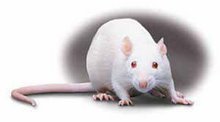I like small people. I should, since I’m pretty small, and my lovely wife is the same height.
Think of all the benefits of being small. We fit better in compact cars. You can fit more of us on a sofa, bed, trampoline, or any other small space. We aren’t as heavy or bulky, so we make better astronauts, airline attendants, and horse jockeys. Airline and theater seats are more accommodating. We tend to eat less and talk softer. We look smashing when costumed as leprechauns, Yoda, or E.T. We don’t need as much clothing in square footage to cover our bodies, so clothes are cheaper. Finally, and perhaps most importantly, it’s easier for us to do the limbo.
Oh, sure, there are drawbacks as well, like reaching high shelves, changing light bulbs, or peeking over fences to spy on neighbors, but that’s what ladders are for. And maybe there are “heightist” people out there who discriminate against us. But then, do I really want to hang out with those tall folk? Gravity affects them more, and I don’t want to be slowed down by their gravity-dragging bulk.
Yes, it’s not so bad being small. In fact, maybe there should be MORE of us around. Do you think we could genetically engineer people to be born small? Eugenics, of a sort?
Well now we’ve taken a step toward making that wonderful world a reality, thanks to some miniature dogs and their geneticist owners and other researchers:
http://www.physorg.com/news95001402.html
As published in the recent issue of Science magazine (see HERE for the article abstract), researchers found that a regulatory sequence for a gene for insulin-like growth factor 1 (IGF1) is found only in dog breeds under 20 pounds. Larger dogs had the gene, but not the regulatory sequence. This gene is found on doggy chromosome 15. The study started with some small Portuguese water dogs owned by one of the authors, then “expanded the genetic analysis to 3,241 dogs from 143 breeds, ranging from small ones like bichon frise, Chihuahua, Maltese, Pomeranian, toy poodle, pug and Pekingese to large breeds such as Saint Bernard, Newfoundland, mastiff, Great Dane, Irish wolfhound, and standard poodle.” Said the authors (according to the PhysOrg.com article), “All dogs under 20 pounds have this – all of them. That's extraordinary." With one curious exception (Rottweilers), none of the larger breeds had the haplotype.
The researchers will next be inserting this haplotype (gene plus regulatory sequence) into mice to study the effect.
Okay, so when can we start transforming our human embryos with this doggy DNA? Yes, as in genetic engineering of humans. I want a world of little folk! But this might have some unintended side effects. Can you imagine a world full of little people who get yappy and pee on the rug at the drop of a hat?
Subscribe to:
Post Comments (Atom)



5 comments:
Yappy rug pee bad. Don't hate me because I'm semi-tall. LOL.
So either I missed something or I'm just not getting it. Why are they going to study this in mice? What is the aim? Sorry for my ignorance.
It's a science theory sort of thing. They've succeeded in finding a very strong relationship between the gene haplotype and dog size, but they cannot validate that it is a "causative" agent without somehow reproducing the effect, thus they need to insert the haplotype into another animal to see if the effect is real.
Think of it in a different way: Let's say we have a bunch of Kirby vacuum cleaners [instead of dogs], for instance, that all seem to fail to pick up dirt when they have a particular kind of cleaning brush [size haplotype]. There is strong evidence the brush is at fault, but you can't be certain that it's not some other factor, like the tubing or the dust cannister [other genes]. So one test is to take another brand of vacuum cleaner that's working fine [mice] and put the Kirby brush into it [insert the haplotype into mice]. If the other brand of vacuum now fails to clean after the brush is added, your evidence for the defective brush is now much stronger [if the mice born with the new haplotype are small, you have stronger evidence that there aren't other factors that affect the size].
Does that make sense? Hopefully I didn't confuse you more... :/
Actually that made complete sense. I really enjoyed your vacuum cleaner analogy. I see now it's mainly a prove it thing for the time being. My mind leapt straight to the 'where will they apply that?' question. I guess we'll have to wait and see.
Thanks ALR.
hi ... I really am very grateful for any information that you shared with readers, to me seemed a very interesting and I love to get much more information.
hello, i think that this post is the best that i have read because has useful information.
Post a Comment